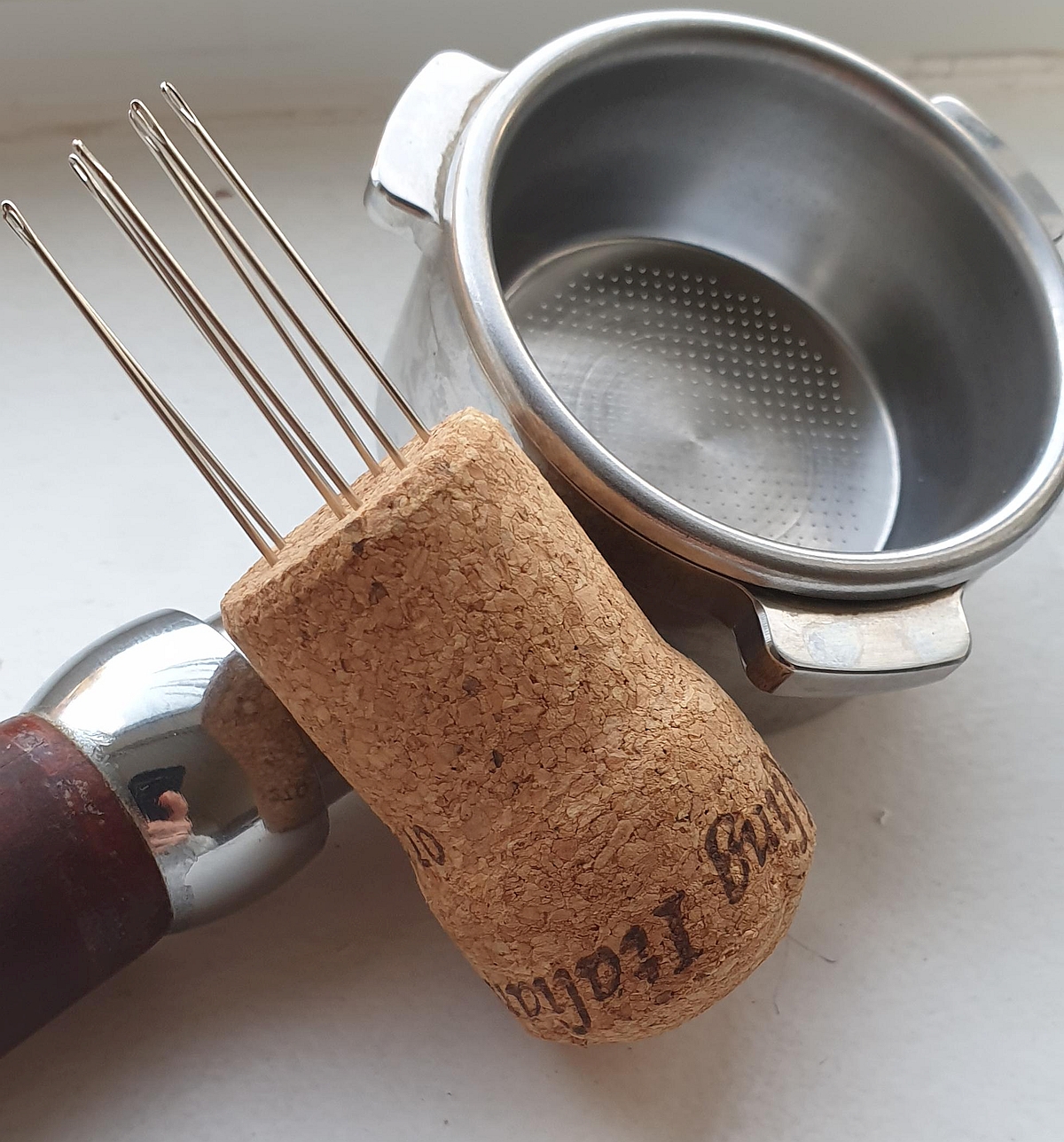
The Weiss Distribution Technique (WDT) is getting a lot of traction in the espresso circles. Although not entirely accepted by the passionate espresso community, you can see more and more people adopting it, especially home baristas, who have more time to dedicate to puck prep.
The Weiss Distribution Technique (WDT) is a method of distributing and the ground coffee in the portafilter. The method involves using a specialized tool to de-clump and evenly distribute the grounds. This technique is designed to create a more uniform bed of coffee in the portafilter, which can lead to a better extraction, resulting a more consistent and balanced espresso shot.
One of the main benefits of the WDT is that it allows the barista to achieve a deep and even distribution of the grounds, which can’t be done using any manual techniques. This can help to eliminate "channeling," or the tendency of the water to flow through certain paths in the coffee bed rather than evenly extracting from the entire bed.
Puck raking is another method of distributing and tamping ground coffee in a portafilter. This technique involves using a flat tool to scrape the surface of the coffee puck, creating a level and smooth surface. Puck raking can be a quick and easy way to distribute the grounds, but it does not address clumps or unevenness below the surface of the puck.
The WDT and puck raking are both methods of distributing ground coffee in a portafilter, part of the puck preparation, before tamping coffee in the portafilter. Each of these techniques has its own benefits and drawbacks, and the right method will depend on the preferences and skill level of the barista. The WDT is known for providing a deep and even distribution of the grounds, but it requires the use of a specialized tool and it will add extra time and complexity to your puck preparation. Puck raking is a quick and easy way to level the surface of the coffee puck, but it does not address clumps or unevenness below the surface.
Both puck raking and WDT improve the extraction, but professional baristas might chose to not use in their espresso preparation routine, since they add precious time, which baristas often don’t have in a busy commercial environment.